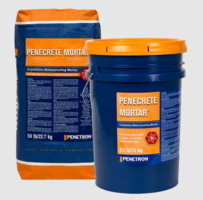Penetron and the Novokuznetsk Planetarium Look to the Stars

EAST SETAUKET, N.Y. (PRWEB) MARCH 23, 2021 - Reopened in December 2020, in time for the New Year’s and Christmas holidays in Russia, the updated Novokuznetsk Planetarium in Novokuznetsk, Russia now sparkles with new technology to provide a spellbinding view of our Solar System and distant galaxies. The Penetron System was applied to ensure durable below-grade concrete structures that are resistant to the harsh Siberian climate.
Located in southwest Siberia, Novokuznetsk is a city of almost 600,000 inhabitants and home to the Novokuznetsk Planetarium, a popular regional tourist attraction. The original Planetarium was built in 1959. In 1970, the facility was moved to its current location, then rebuilt and expanded. With the completion of the most recent update at the end of 2020, the facility now features a state-of-the-art Zeiss Skymaster ZKP 4 LED planetarium projector combined with a SPACEGATE Quinto full-dome system.
"The new SKYMASTER ZKP 4 projects around 7,000 tiny stars – approximately the same number the human eye can detect on a clear, dark night,” says Igor Chernogolov, President of Penetron Russia. “Thanks to the new LED technology, the starry sky in the Planetarium is now very bright and sharp. The Milky Way, star clusters, nebulae and galaxies appear on the planetarium dome in all their detail. It's brilliant!"
Stars Above, Frozen Ground Below
Before construction began, the general contractor needed a clearer understanding of how to best meet the requirements of a durable foundation for all below-grade concrete structures that housed much of the new technical machinery of the planetarium. The specialists at Penetron Kuzbass, the regional Penetron distributor for southwestern Siberia, were well aware of the harsh climactic conditions of the region and provided an optimal concrete waterproofing solution.
PENETRON and PENECRETE MORTAR were specified as a topical application to waterproof the new foundation and below-grade structures. PENECRETE MORTAR was used to seal tie-holes and any cracks in the new concrete structures, and a layer of PENETRON was applied to all exposed surfaces to ensure a waterproof and durable planetarium structure.
Providing Resistance to Freeze-Thaw Cycles
Once applied to the prepared concrete surface, the proprietary chemicals in PENETRON (and PENECRETE MORTAR) reacts to the moisture in concrete to generate a non-soluble crystalline formation throughout the pores and capillary tracts of the concrete. This formation becomes an integral part of the concrete matrix to self-heal and seal micro-cracks, pores and voids (up to 0.5 mm / 1/51” wide) for the service life of the concrete. The concrete is now impermeable to the penetration of water or liquids from any direction, and resistant to concrete deterioration due to freeze-thaw cycles common during the long Siberian winters.
“This year the world will celebrate the 60th anniversary of the first human spaceflight, when Yuri Gagarin became the first human to journey into outer space on April 12th, 1961,” explains Igor Chernogolov, President of Penetron Russia. “The completion of the renovation of the Novokuznetsk Planetarium will help raise awareness of this momentous event.”
The Penetron Group is a leading manufacturer of specialty construction products for concrete waterproofing, concrete repairs and floor preparation systems. The Group operates through a global network, offering support to the design and construction community through its regional offices, representatives and distribution channels.
For more information on Penetron waterproofing solutions, please visit penetron.com or Facebook.com/ThePenetronGroup, email CRDept@penetron.com, or contact the Corporate Relations Department at 631-941-9700.




